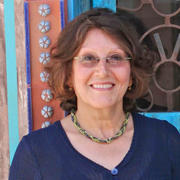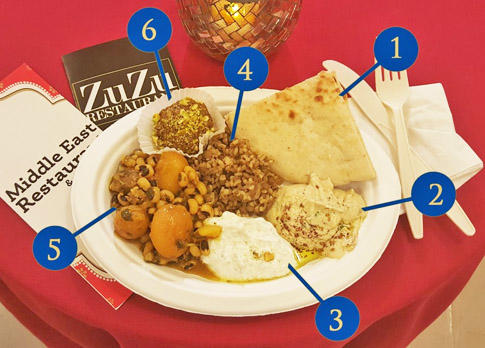
If you happen to be a bewitched male, you may have just missed your chance at a cure.
The Semitic Museum at Harvard recently hosted an evening of Ancient Mesopotamian cuisine, following a program on Ancient Mesopotamian music. Drawing from a range of ancient source material, the dishes were prepared from 4,000-year-old recipes, and included dips, stews, and desserts.
One item on the menu? An ancient Assyrian stew of beans, apricot, salt, and kidney-meat, which was intended to cure a man bewitched.
The recipes were culled by food scholar Nawal Nasrallah, who chose from among 40 recipes persevered on cuneiform tablets held in the Babylonian Collection at Yale University. The food itself was prepared by the Middle East Restaurant in Cambridge, which followed the recipes as exactly as they could.
"One food-related source," Nasrallah explained of the nature of the tablets, "is a bilingual Sumerian/Akkadian dictionary, in which a section was allotted to food. From this document, we learn that the ancient Mesopotamians knew how to make 30 kinds of cheese, and they knew about 300 types of bread. We know they favored lamb, and the fat tail of the sheep bred in that area was considered a delicacy."
Another tablet is an ancient Assyrian document that discusses the medicinal benefits of food, and from which we get the stew intended to cure bewitching. The diversity of such recipes revealed a cuisine more refined than previously thought.
The event, hosted on the third floor of the Semitic Museum, was limited to about a 100 tickets, for $50 each, and sold-out the night before. The enthusiastic crowd was a diverse mix of Cambridge locals and Harvard professors, undergraduates, and graduate students, many affiliated with the Department of Near Eastern Languages and Civilizations. Most people had attended the lecture on music right before, and felt the opportunity seemed too unique to pass up.
"I love all things Sumerian," said Katherine Underwood, who came from Arlington and works near Kendall Square, "and this and the music event just looked so cool."
Underwood found out about the event through the Semitic Museum’s Facebook page, and convinced a friend to join her.
“By doing some of these everyday things of people who lived long ago, we think of them in a more human way.”
At first glance, the menu looked like a typical Middle Eastern meal, with two types of hummus, yogurt spreads, pita bread, bulgur simmered with lentils, and lamb stew. The key was noticing what was not included.
For example, there was no rice in Ancient Mesopotamia, (it wouldn’t appear in the area until the first century BCE), and certainly no tomatoes, green beans, potatoes, or other ingredients often used in stews today, but which wouldn't be introduced until the nineteenth century.
There were very few spices, so ingredients had to be prepared in a way to maximize their flavor. One of the yogurt spreads was made from a recipe that called for mashing together leeks, garlic, and a bit of za’atar with a mortar and pestle before adding the mixture just at the end of the cooking process. This ensured that it stayed as pungent as possible.
The event was the brainchild of Professor Gojko Barjamovic, who teaches an "Ancient Lives" gen ed course that emphasizes hands-on learning, and which includes museum visits, archeology lectures, and, later next month, an actual cooking workshop with Nasrallah herself.
Earlier in the day his students were led through a two-hour workshop that took apart ancient Mesopotamian instruments, before hearing some of them played.
"By doing some of these everyday things of people who lived long ago, we think of them in a more human way," Barjamovic said of his teaching approach. "I see events like this as teaching to the senses, where music, art, and taste all create a palette that allows the past to be present to all our senses."
His students agree.

Photo: 1. Pita bread 2. Hummus 3. Yogurt spread 4. Bulgur and lentils 5. Lamb with apricots and black-eyed beans, 6. Date and nuts. / Credit: Kaitlynn Anderson
Chris Arendt, Harvard College '18, a current student in "Ancient Lives," said that while he feels the lives of ancient people to still be very distant from his own, "I definitely understand them a lot better than I did."
His friend, Harry Newman-Plotnick, Harvard College '18, also an "Ancient Lives" student, agreed.
"You understand the approach better, and it's certainly more memorable than just reading about it in a textbook," he said.
Professor Robert Homscher, who teaches archeology in the NELC department, felt that events such as these push students to think more carefully about how academics reach conclusions about the past.
"A lot of the things we want to talk about are very abstract, and asking how we have knowledge about them is useful," he said.
The history of food has long been an important field for many academic disciplines, helping scholars understand the boundaries of group identities and assessing the development of particular rituals, especially animal sacrifices and taboos.
Nasrallah, who is currently working on a project translating medieval Arabic cookbooks into English, feels that understanding food allows for unique insights into human history.
"I think that food history offers a rich source to get to know the other; in fact, much richer than following the venues of traditional history, of kings and conquests. The invaluable material culture that food history offers is much more relevant."
—by Shira Telushkin, MTS candidate
